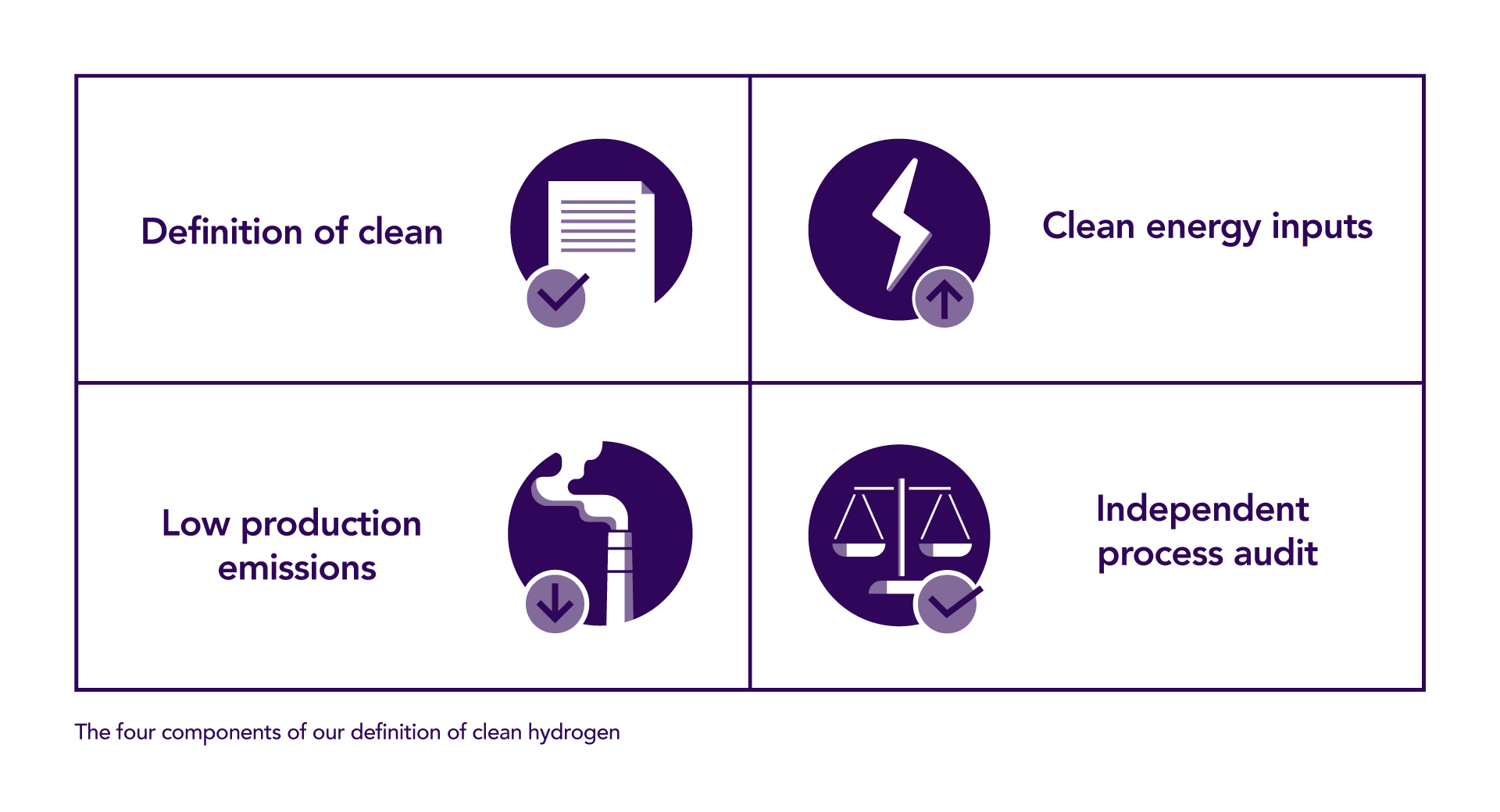As governments around the world launch ambitious national hydrogen strategies, pressure is mounting to deliver the enormous amounts of hydrogen promised for the energy transition.
The debate of how to rapidly scale up hydrogen has quickly turned to question what the definition of clean hydrogen truly means.
Hydrogen is an energy carrier which must be produced by existing forms of energy, storing energy in a similar way to a battery. This means we can’t assume by default that hydrogen is clean, and we need to examine the lifecycle of emissions associated with its production and original energy source. See here for an explainer on the different ways to produce hydrogen.
So how do we know if hydrogen is helping to mitigate climate change, or having the opposite effect and contributing to increased emissions?
We’ve put together a Clean Hydrogen Definition, which incorporates the Green Hydrogen Standard, the only hydrogen definition aligned with a 1.5 degree pathway. Using the same level of emissions for both green and clean hydrogen ensures:
- A ‘level playing field’ in the hydrogen industry: all hydrogen should meet the same rigorous emissions standards into the future.
- When clean hydrogen is used (e.g. for decarbonising industry, transport or heating) it will have equally low carbon emissions, whatever the source of the hydrogen.
- Anyone specifying systems that use clean hydrogen will be confident of the level of the associated emissions, without having to perform a detailed analysis of the pedigree of the hydrogen. This will simplify hydrogen trade by providing market alignment between countries.
- Best available technology will be used uniformly in hydrogen production.
- Any government subsidies applied to clean hydrogen manufacture will be applied in the best interests of the environment, rather than in the interests of one sector of the industry over another.
We have analysed the major hydrogen production pathways and their associated greenhouse gas emissions when hydrogen is produced from natural gas coupled with carbon capture and storage (also known as blue hydrogen, or fossil hydrogen with CCS), to draw a conclusion on what is needed for hydrogen to truly be considered clean or low emissions.
You can download our full Clean Hydrogen Definition here, or read on for a short summary.
When producing fossil hydrogen with CCS, there are many ways in which greenhouse gas emissions can leak into the atmosphere along the lifecycle of production. The main ways are illustrated below.

To account for all of these emissions we propose four key conditions that hydrogen must meet, to minimise emissions to the extent where we could consider it clean:
- Definition of clean hydrogen
- Clean hydrogen inputs
- Low production emissions
- Independent process audit
Please see the header image for a summary table.
These conditions for clean hydrogen produced from natural gas with CCS will be challenging for the blue hydrogen industry to meet.
This is both in terms of the source of the natural gas (there are very few areas that can produce natural gas clean enough to meet the proposed standard) and in terms of the technology used to manufacture the hydrogen. However, this level of emissions is what is needed to produce hydrogen that will be effective in reducing greenhouse gas emissions out to 2050.
For more information, read the full definition here.



